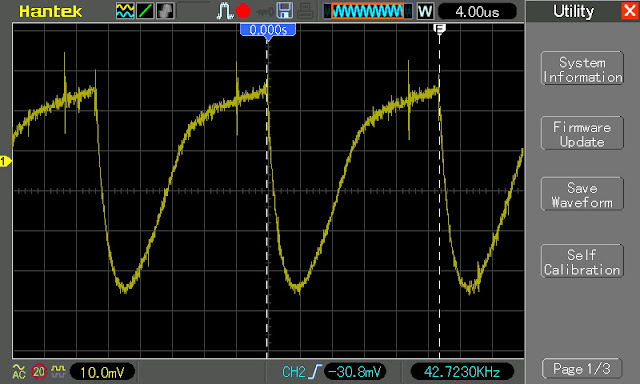Hello and welcome to the whatishifi blog.
The spark for this post came from a news email I got from Zappiti, with some additional products that suggest to increase the performance of my Zappiti media player.
The one I have is the Zappiti One 4K HDR. I am very happy with it's performance and I appreciate the HDR to SDR conversion; although the picture I get with this conversion is not perfect (I can not perfectly calibrate the blacks at a SDR display or projector), by dropping at the video projector the gamma from 2.2 to 2.0 and keeping all the other calibration adjustments I have made for Full HD SDR content, it is pretty good.
Anyway, among other products included at that email, what caught my attention was an iFi Audio iPower 12V PSU. According to Zappiti, due it's high quality and it's dynamic noise suppression the user can get better sound coming out from the Zappiti media player.
I was discussing this with my friend Panos the other day, but he was skeptical about the actual effect on performance that it could have. After all, the media player is acting like a "transport" that through HDMI is feeding the Yamaha AV who is taking care of the multi channel digital to analogue decoding. But having in mind all the experience we had with power supply cables, power regenerators, the PSU of our EMU USB DAC and all the madness involved in Hi-Fi that can sometimes not be explained by logic, I convinced him to make a test.
So, I got the generic PSU of the Zappiti at his home in order to see it's output at an oscilloscope. By using an 8 ohm load, we compared it with another good 12V PSU from a satellite receiver and we saw that there was around an 20% of improvement. Also, the other PSU was 25% stronger, rated at 2.5A instead of 2A of the Zappiti.
 |
| This is the output of the Zappiti generic PSU... |
 |
| and this is the output of the other PSU we had in hand. |
Still, Panos didn't doubt that there could be a better switching PSU out there, he doubted about the actual real life performance impact at the sound of a Home Cinema media player at it's digital out it could have. It is a Home Cinema after all, with compressed soundtrack and not a demanding 2 channel stereo high res critical listening.
Knowing the threat of the placebo effect and understanding that it would be very hard to spot any difference between the time needed to power off the media player, change the PSU, power it on etc., we decided to do a recording, so we could make an instant A/B sound comparison.
In the meanwhile, Panos thought that if the sound performance of the media player can be indeed affected by the PSU, why not feed it with the perfect power: a battery. This way, differences would become bigger and easier to spot. So, instead of comparing the two PSU we had, we decided to compare the generic PSU with a 12V battery.
 |
| Ready to test the Zappiti with clean battery power. |
Unfortunately, things did not work out as planned. With the battery charged and measuring at 12,7V, the Zappiti turned on without any problem, but the internal HDD became invincible. Trying to understand what was wrong, we found out that the Zappiti was not an easy load; with the media player connected and powered, the battery had dropped bellow 10V! Still, the fact that the player was working with such a low voltage indicates a good internal voltage regulation.
The only thing left to do was to compare the sound of the two PSU we had in hand.
 |
| The two PSU waiting to be compared. |
We choose a good recording, Diana Krall Live in Paris, which has both a stereo PCM and a multi channel soundtrack. We turned on everything that is needed for watching a concert (so we have real life scenario circumstances) and we choose the 2 channel PCM audio. This audio was converted again to digital through a Sony DTC-60ES DAT at 48kHz with the Super Bit Mapping activated and digitally fed at an Alesis Masterlink ML-9600 HDD recorder.
 |
| A Sony 60ES DAT acting as an ADC. |
 |
| The Alesis Masterlink ML-9600 was used as our recorder. |
We made two recordings of the same track at the exact same dB; one with the generic PSU and one with the other we had.
After that, we could go back and forth in these two tracks and compare the sound. It took us some time but eventually we spotted that the bigger PSU made an improvement; the low end was a bit more solid, communicating the rhythm of the music in a better way. The difference was small, but definite. From the moment we spotted it, it became clear that it was there.
In practice we know that the more a PSU is reaching it's limits, the more noise it creates. We don't know if the improvement was caused because we upgraded from a 2A PSU to a 2.5A one or due to the lower noise that the bigger PSU had - or a combo of both.
However, since the iFi PSU is rated at 1.8A I decided to stick with Pano's PSU; after all I was already exited by the sound performance of my Home Cinema and the new PSU did make a small improvement. Am I right with this decision? Honesty, at this point and the performance I already get I don't care. If the iFi was at least 2.5A I would give it a try just out of curiosity.
That's all for now. As always, happy listening!
Christos

sig sauer p320
ReplyDeleteak47
ar 15
garand m1
m16
steyr aug
glock 17 gen 4
glock 17
glock 19
glock 19x